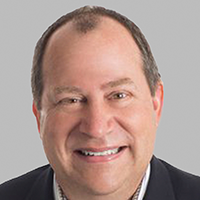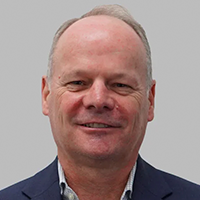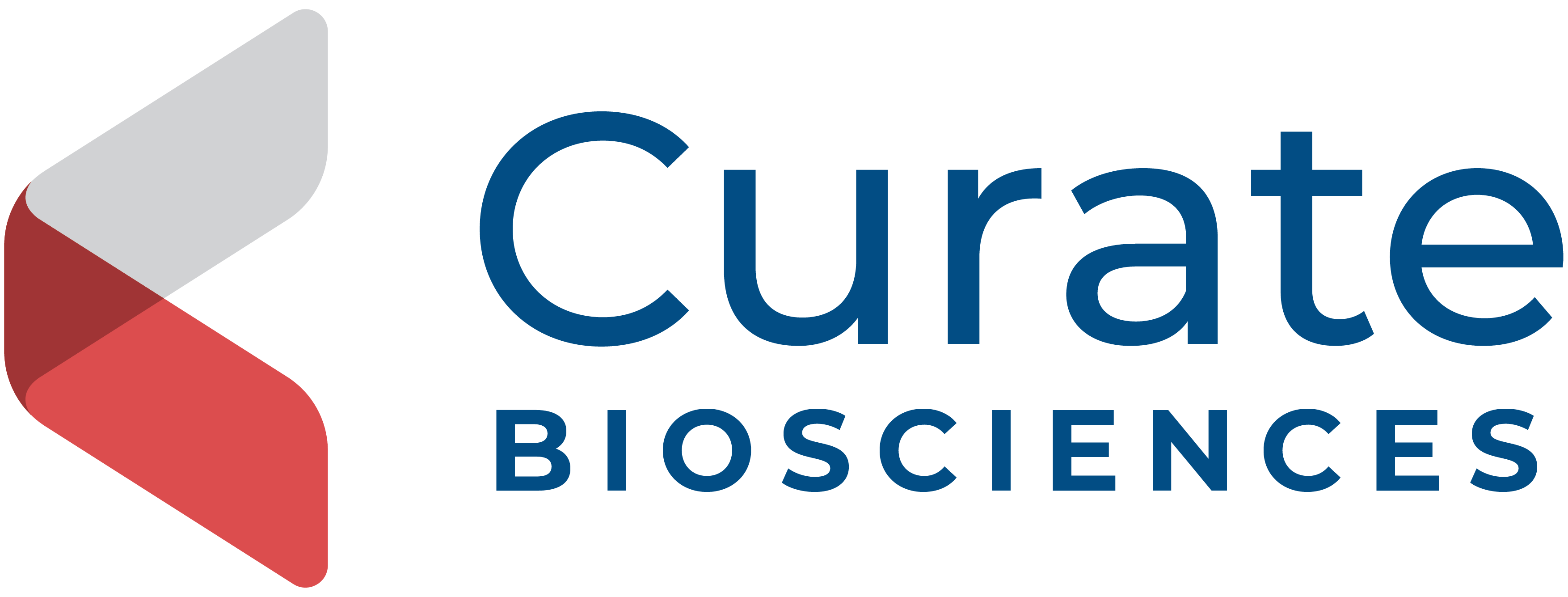Modernizing cell therapy manufacturing to reduce vein-to-vein times
Cell & Gene Therapy Insights 2023; 9(6), 843–850
10.18609/cgti.2023.104
Listen to the podcast here, or read the the interview below.
If you enjoyed this episode, you can listen to all episodes from The BioInsights Podcast wherever you normally get your podcasts.
Follow the Podcast to make sure you don't miss the next episode.
Dave, you have been in this field for some time now. How have you seen CAR-T cell therapies evolve?
DB: Yes, I have been in cell and gene therapy for over 25 years, almost since the inception of the technology itself. First of all, we would not even be having this discussion if not for the scientists and clinicians at UPenn who initiated the first clinical trials using genetically modified T cells. The initial studies and products were primarily around a single antigen found on a cancer cell—CD19. While there have been many additional trials that are variations on the theme, there has been a search for new antigens, multiple antigens, and utilizing other cell types such as NK cells. Throughout this, there has been a drive towards more precision, focusing on specific subunits. More precision means you need to capture and keep as many target cells as possible in their initial state.
What are the key challenges and priorities for CAR-T cell manufacture?
DB: We have already seen that it is a successful therapy that can be commercialized. The products currently on the market are primarily for leukemias but there is increasing discussion about moving into areas such as multiple myeloma.
CAR-T cell therapies are moving from fourth-line to third-line and even second-line treatments. That is expanding the patient population and exacerbating the problems with the original manufacturing process, which involves doing leukapheresis on the patient’s own cells, shipping them to a centralized manufacturing center to carry out various manipulations, release test, and send the cells back to the patient to be reinfused. This process is highly expensive and time-consuming and is normally carried out in centralized manufacturing facilities due to the GMP requirements.
We and others are looking at the different unit operations and improving them, utilizing newer technologies to move production to regional centers (a distributed model) rather than a centralized manufacturing model.
TW: As Dave noted, the T-cell field is learning more and more about what works and what doesn’t. An example is better understanding of the importance of younger and naïve T cells, leading to a greater focus on how best to recover and maintain that smaller subset of T cells. This is especially difficult when considering the patient profile, which includes elderly patients with lower levels of naïve cells, and leucopenic patients in second-, third-, and fourth-line treatment.
Why are the initial steps in apheresis or debulking particularly important?
TW: Apheresis samples degrade quickly over time. At a high level, there are two main aspects of this: a) physical cell loss and death over time; and b) the response of the innate immune system to cell death, which includes a lot of cell signaling.
The industry is split on how to handle this. It is recognized that fresh cells are the better starting material, but for 2–8°C controlled samples, the quality degrades beyond 24–36 hours, when the innate immune system response kicks in. The industry’s response to this has been to use frozen samples. However, the freeze-thaw process is far from perfect, even with a lot of improvement and a significant effort by a lot of companies.
The process is still highly variable and there is a significant amount of cell loss, especially when targeting a smaller subpopulation of cells. The freeze−thaw process also requires a recovery period after thawing, which adds time and variability to the overall manufacturing process. There is also variability in the ability of patient cells to withstand the process.
At an industry level, there is no consistency in where the freezing process takes place—at the collection site or at a regional processing center. So, the variability is exacerbated not only by the patient’s state of health but also by the process used and the timing of processing. The use of 30−50-year-old techniques only adds to the variability.
For T cells, there was always a sense in the market that you could, ‘Grow your way out of the problem’. However, recent data from multiple groups show the therapeutic benefits of a shorter time in culture. In fact, most developers of these commercial therapies now state that their best yields and out-of-specification products are directly correlated with the quantity and quality of the starting material.
DB: As Tony mentioned, there are a variety of different protocols that people are using as we move into the next stage of autologous cell therapy manufacturing. We are all trying to do the same thing—find a way for the patient to get their cells re-infused in the cleanest and fastest way possible. We are doing everything we can to make sure that those precious patient cells are protected so that downstream activities to create a gene-modified cell can occur in the best way possible. That is the imperative that we have put into our company.
Let’s talk about how Curate Biosciences is addressing some of those problems. What does Deterministic Cell Separation™ (DCS) microfluidics involve and how does it differ from commonly used techniques?
TW: DCS involves the microfluidic separation of cells on the basis of size, rather than density. It is a fully closed system, and within our consumable is a 3.5 million micro-post array where each micro-post is around double the size of a typical monocyte. These posts are precisely arranged so that large cells (in this case, leucocytes) are gently deflected into a parallel clean buffer stream, effectively washing the cells individually, while letting the smaller cells (platelets in apheresis) and plasma pass straight through. The red cells, being discs, flip on their axis around the posts and roll through the device and come out in the small cell and plasma fraction. This eliminates the need for an acidic lysis step, which is metabolically damaging.
A key distinction of DCS separation versus other techniques is that it is amazingly efficient and consistent. This results in a uniquely powerful process that combines four best-in-class metrics into one platform:
- The array is over 95% efficient at recovering large cells and is unbiased when compared to density and lysis combinations;
- The overall process has <7% coefficient of variation;
- It is >99.5% efficient at removing platelets;
- It achieves a >3 log wash efficiency for soluble factors as part of the process.
We believe the technique has the potential to be a revolutionary technological advance. Individually, these metrics would be a significant improvement on the existing manufacturing process. In combination, they are uniquely powerful.
How can DCS optimize the expansion of T cells and reduce manufacturing time?
TW: In the simplest terms, the objective in CAR-T cell engineering is to maximally recover the youngest T cells, keep them young and as ‘fit’ as possible, while most efficiently targeting them to the tumor. So, the practical goal for the developers is achieving the best recovery, with the most predictable cell engineering and the ability to consistently make the highest quality dose.
We have third-party data showing recovery of up to 30% more of the naïve or younger T cells in their first step with DCS compared with a new elutriation approach. In another third-party study, almost twice as many total T cells were recovered with DCS when compared to an automated Ficoll centrifugation approach.
Going into the engineering process with the knowledge that you can reliably get the most out of the sample is the first step—and this is especially important if specific T subsets that require multiple cell-specific selections are involved.
This recovery alone will enable much shorter processes to be more easily considered—one of our collaborators is now targeting a 2-day manufacturing process, for example. For TCR-T processes where more cells are currently needed, in addition to the initial recovery our internal data shows an approximately 30% better fold expansion at day 12.
Does cell separation have an impact on any subsequent genome editing steps?
TW: There are four parameters that come together. We see a biological advantage that is derived from the DCS wash/separate process itself. When doing comparison studies, we found that density-based separations still contain platelet aggregates, which persist for several processing steps. Biologically, this is important because the platelet aggregates are still releasing pro-inflammatory cytokines and chemokines, which then act upon the T cells and start signaling events.
This results in a DCS cell preparation that is about 50% less pre-activated, generates about 50% less regulatory T cells (which is critically important to dose quality), and has also been shown to have 30−50% improved lentiviral transduction efficiency—all benefits that are directly related to the efficient and timely removal of cytokines and chemokines.
So, it’s not just improved editing steps—it’s an overall improvement in the ability to recover, engineer, and reliably and rapidly deliver the cells of the right phenotype. And it’s not just in fresh cells—cells that have been DCS prepped and subsequently frozen retain these positive attributes.
The same broad benefit of less activation and fewer T-regulatory cells means DCS-prepared cells experience less lag in the early days of expansion, which we expect to be especially important in shorter processes.
Can you elaborate on how manufacturing processes can help ensure the clinical efficacy of the product by removing unwanted factors that can impact transduction efficiency?
DB: We clearly cannot say clinical efficacy at this point, but things are heading in the right direction. We just launched our product commercially earlier this year and we are in the process of getting into clinical trials. However, getting the right cells to the starting line in the right condition is potentially a huge step forward for the industry.
If we follow the clinician’s credo of ‘First, do no harm’, it’s clear based on our findings so far that it will be better for the patient if unwanted signaling can be stopped. We think that the right thing for both patients and the industry is to perform DCS processing as soon as possible post-collection and then engineer from there—whether frozen or not.
Biographies
David Backer has over 25 years’ experience in cell and gene therapy. He was Owner, Founder, and CEO of Molecular Medicine BioServices, focused on GMP manufacturing of viral vectors. Dave sold the company to Sigma Aldrich and stayed on in a variety of commercial, strategic, and operational roles. After Sigma Aldrich became MilliporeSigma, Dave expanded his responsibilities as Head of Commercial Development for its Gene Editing and Novel Modalities business. Most recently, Dave was SVP of Commercial Development at ElevateBio and then Chief Commercial Officer at Oxford Biomedica.
Tony Ward previously worked in R&D at Becton Dickinson prior to moving to commercial roles, leading up to being Global Strategic Marketing Director for Becton Dickinson’s research cell analysis business. He was recruited to lead commercial operations for eBioscience from startup through sale to Affymetrix, where he served as SVP/General Manager for the business unit. Tony’s background includes invention, development and commercialization multiple cell processing and assay technologies.
Affiliations
David Backer
CEO, Curate Biosciences
Tony Ward
CTO, Curate Biosciences
Authorship & conflict of interest
Contributions: The named author takes responsibility for the integrity of the work as a whole, and has given his approval for this version to be published.
Acknowledgements: None.
Disclosure and potential conflicts of interest: The authors are Curate Biosciences employees and stock holders.
Funding declaration: The authors have received a NIH STTR Grant.
Article & copyright information
Copyright: Published by Cell and Gene Therapy Insights under Creative Commons License Deed CC BY NC ND 4.0 which allows anyone to copy, distribute, and transmit the article provided it is properly attributed in the manner specified below. No commercial use without permission.
Attribution: Copyright © 2023 Curate Biosciences. Published by Cell and Gene Therapy Insights under Creative Commons License Deed CC BY NC ND 4.0.
Article source: This article is based on an podcast, which can be found here.
Podcast recorded: Jun 23, 2023; Revised manuscript received: Jul 18, 2023; Publication date: Jul 27, 2023.



